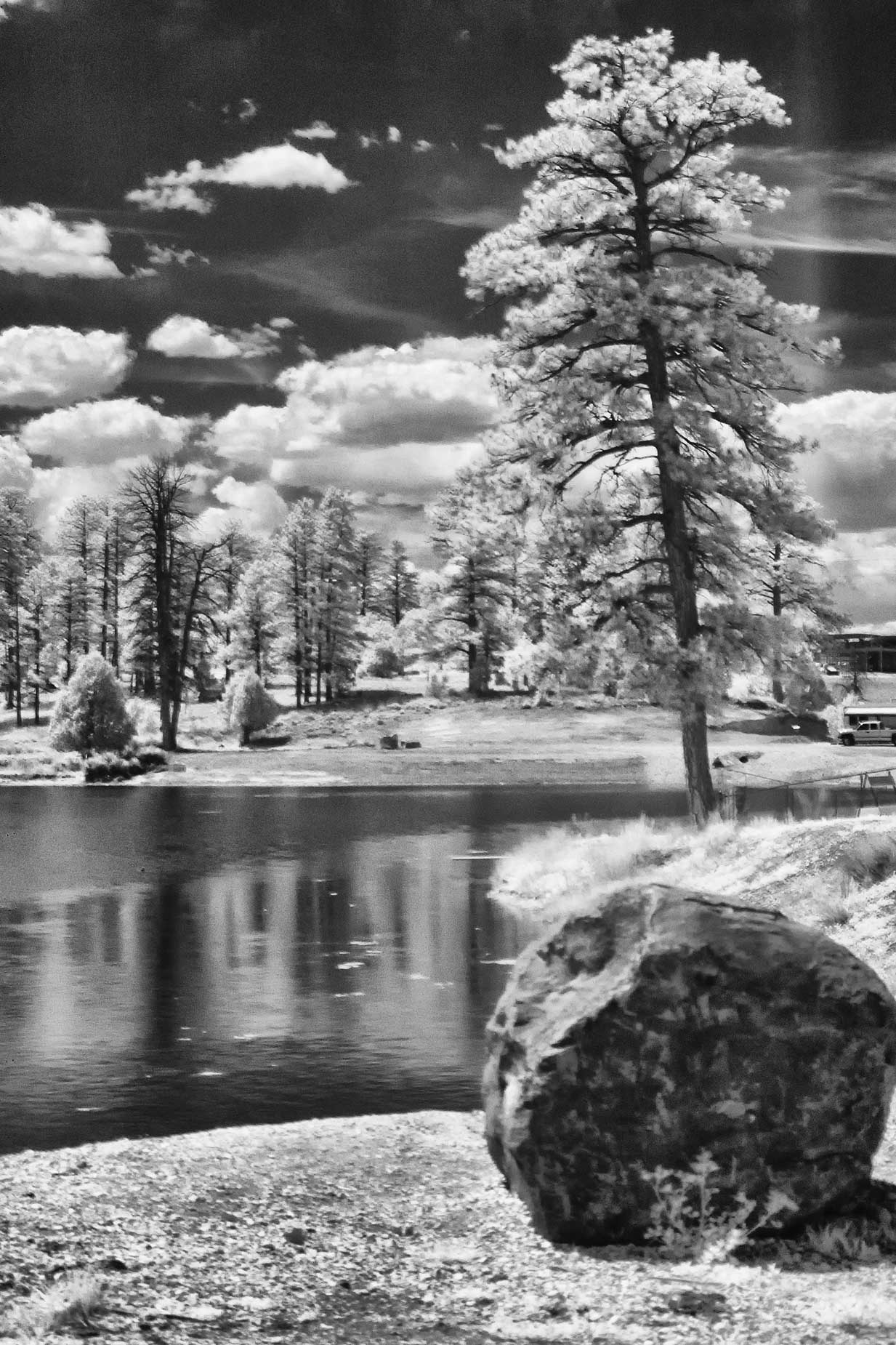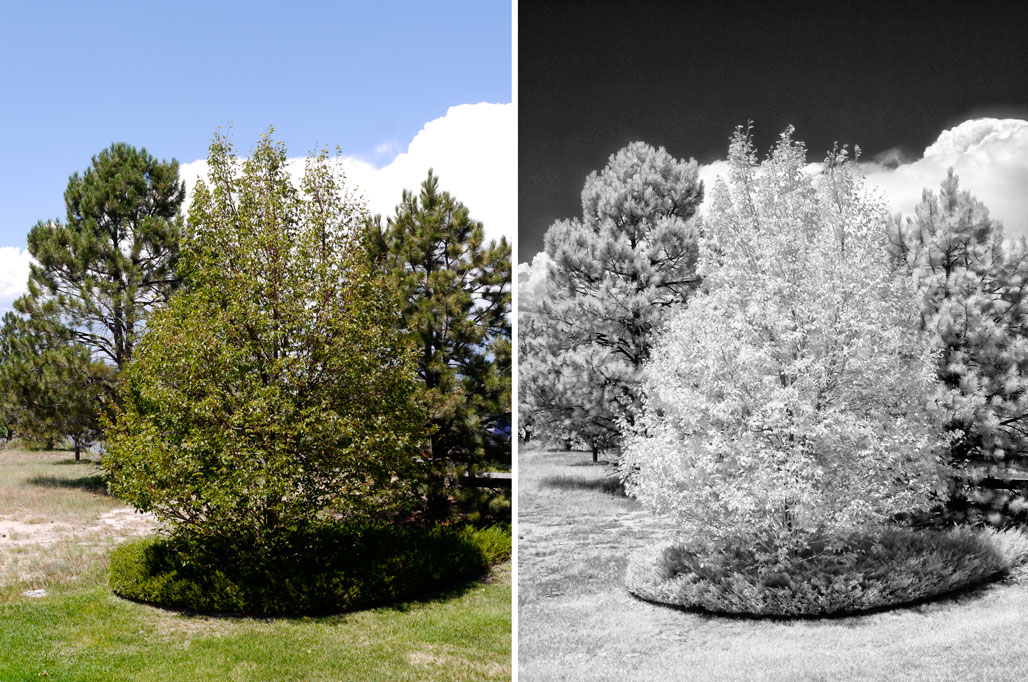Today’s Post by Joe Farace
 There are, at least, two basic methods for capturing infrared images with mirrorless cameras: The first is by mounting an infrared filter such as the Hoya R72 on a camera’s lens. Other filters, such as Singh Ray’s I-Ray or Cokin’s A007 filter, this latter one may be hard to find, work well with the Singh Ray being the most impressive and also most expensive.
There are, at least, two basic methods for capturing infrared images with mirrorless cameras: The first is by mounting an infrared filter such as the Hoya R72 on a camera’s lens. Other filters, such as Singh Ray’s I-Ray or Cokin’s A007 filter, this latter one may be hard to find, work well with the Singh Ray being the most impressive and also most expensive.
The second option is having the camera converted to IR-only operation from companies, such as Life Pixel, that offers IR conversions with a variety of filter options.
How I Made this Photograph: This was one of a images I made at (I think) Arches Nation Park. It was made before the wind picked up and wiped out all of the reflections on the lake, although I might still have been a bit late. I used a Pentax K100D DSLR with a Singh-Ray I-Ray Infrared Filter on the smc Pentax-DA 50-200mm F4-5.6 ED lens at 50mm. The exposure of 0.7 sec and f/9.5 at ISO, is typical of the longer shutter speeds you will encounter when shooting with dense infrared filters.
The advantage of using an on-lens filter is that this approach is relatively inexpensive (except perhaps with the Singh-Ray filter) but because these filters are so dense, they produce slow shutter speeds. IR-conversion, on the other hand, is more expensive but after conversion you can only use the camera for IR-capture. The big upside is that it can then be used like any other camera producing hand holdable shutter speeds—no tripod necessary.
The Filter Alternative
For the below pair of shots, I attached a 52mm Hoya R72 filter to a Lumix G Vario 14-45mm f/3.5-5.6 lens that was mounted on a Panasonic Lumix G5 and immediately saw the results on the camera’s LCD preview screen. The camera responded well in Manual mode and when I shifted into Program mode it also produced acceptable exposures. The G5’s autofocus system also blasted right through the filter and quickly focused on the subject matter.
 The image on the left is a perfect infrared test subject: A deciduous tree bracketed by two evergreens that don’t reflect as much IR radiation along with blue sky and white clouds. Exposure for the first shot was of 1/400 sec at f/10 and ISO 400. The image at right, with the R2 filter in place, produced an exposure of 2.5 sec at f/4.8 and ISO 400. If you shoot the camera in Monochrome mode you’ll get a black and white image as shown here. If you shoot in RAW, you’ll need to do some processing.
The image on the left is a perfect infrared test subject: A deciduous tree bracketed by two evergreens that don’t reflect as much IR radiation along with blue sky and white clouds. Exposure for the first shot was of 1/400 sec at f/10 and ISO 400. The image at right, with the R2 filter in place, produced an exposure of 2.5 sec at f/4.8 and ISO 400. If you shoot the camera in Monochrome mode you’ll get a black and white image as shown here. If you shoot in RAW, you’ll need to do some processing.
This was the case with my Panasonic Lumix G5, other manufacturer’s DSLRs and mirrorless cameras may behave slightly differently so the only way to find out what works for your camera is to try it with an infrared filter that you either borrow or purchase with the understanding that if it doesn’t work with your camera you can return it.
